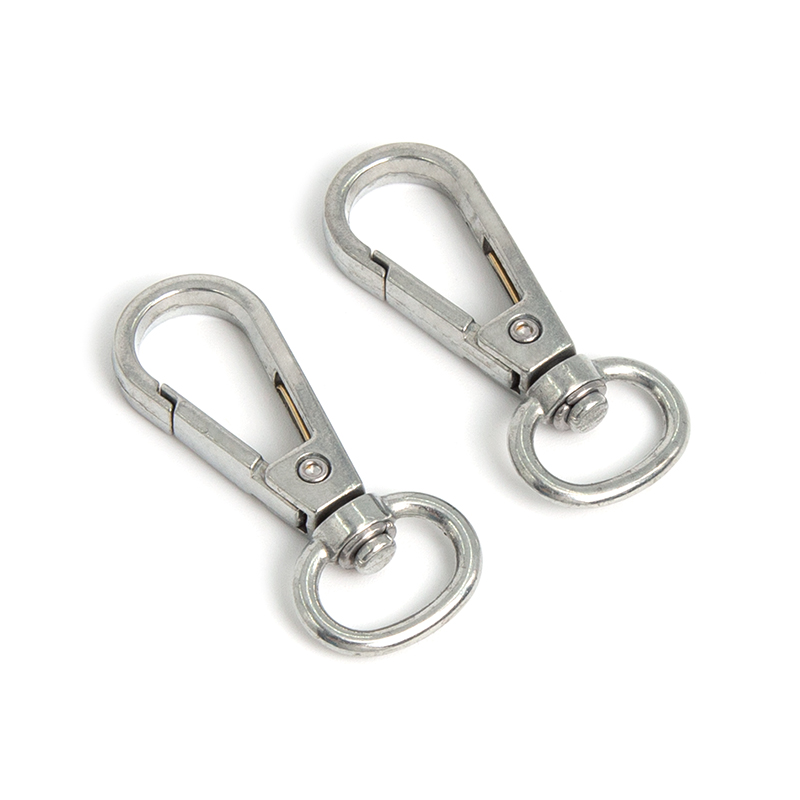How to test and strengthen the bonding strength of the surface plating of zinc alloy die-cast bag accessories?
Release Time : 2025-10-15
Testing and strengthening the adhesion of the surface plating on zinc alloy die-cast bag accessories is a critical step in ensuring product quality. Because zinc alloy die-cast parts are prone to forming zinc- or aluminum-rich phases on their surfaces and have complex shapes, insufficient plating adhesion can easily lead to blistering and peeling. Therefore, improving adhesion requires systematic testing and process optimization.
Testing methods should be selected based on the specific characteristics of the parts. Zinc alloy die-cast bag accessories are often thin or irregularly shaped, so non-destructive or minimally damaging testing methods are preferred. The bend test method repeatedly bends the part 180° along a specific diameter to observe whether the plating is peeling or detaching. It is suitable for wire accessories. The cross-cut test method uses a hard tool to create a grid on the plating surface and assesses the degree of detachment by peeling with tape. It is particularly effective for testing medium-hardness plating. For precision parts, ultrasonic testing utilizes the reflection characteristics of ultrasound to identify internal plating defects and avoid physical damage.
Pre-plating treatment is fundamental to strengthening adhesion. Residual polishing paste, oil, or oxide film easily remain on the surface of zinc alloy die-cast parts, requiring multiple cleaning steps. Mechanical leveling can remove burrs and parting lines. Polishing with a cloth wheel requires controlled pressure and speed to prevent damage to the dense layer. Chemical degreasing uses a weak alkaline solution to prevent strong alkalis from dissolving the aluminum-rich phase and creating pinholes. Etching uses low-concentration hydrofluoric acid or sulfuric acid, with strict control of time and temperature to prevent over-corrosion. Activation treatment involves immersion in sodium cyanide or citric acid solutions to remove the surface oxide film and improve coating adhesion.
The pre-plating process determines the core quality of bonding strength. Zinc alloy die-cast bag accessories require a pre-plating copper solution with a high free cyanide content and low copper content. High-current flash plating is used to form the initial coating to prevent displacement reactions that can weaken bonding. The pre-plated copper layer thickness should be controlled to approximately 10μm. Too thin a layer can easily form a porous structure, while too thick a layer can result in a brittle intermediate layer due to copper-zinc diffusion. For complex structural components, a neutral nickel plating solution can be used in conjunction with pre-plating to improve coating density and corrosion resistance.
Optimizing electroplating process parameters requires precise control. The electroplating solution must have high coverage and dispersion capabilities to avoid the formation of loose coatings in deep recesses or shadowed areas. Current density, temperature, and time must be adjusted according to the coating type. For example, acid copper plating requires controlled current density to prevent burning, while nickel plating requires maintaining an appropriate temperature to ensure fine crystallization. Constant stirring during the electroplating process ensures uniform composition and minimizes fluctuations in bonding strength caused by local concentration differences.
Post-treatment processes enhance coating stability. After electroplating, a dehydrogenation treatment is required, heating at 200°C for 1-2 hours to eliminate the risk of hydrogen embrittlement. For multi-layer protective decorative plating, each layer must be sufficiently thick and free of pores. The cathodic coating layer must be thickened to prevent penetration of corrosive media. Residual plating solution on the surface of the component must be thoroughly cleaned to prevent residue from damaging the coating structure.
Inspection and enhancement must be coordinated throughout the entire process. Bonding strength testing must be performed at every stage, from raw material selection to finished product delivery. For example, pre-plated layers must undergo a bend test to verify adhesion, while finished products must undergo a comprehensive evaluation through cross-hatch and tape pull tests. Batches with insufficient adhesion must be traced back to issues with pre-plating treatment or electroplating parameters, and improvements can be achieved by adjusting etching time, current density, or plating bath composition.
Testing and enhancing the adhesion of zinc alloy die-cast bag accessories requires a closed-loop "test-feedback-optimization" system. By using targeted testing methods to identify issues and systematically optimizing pre-plating treatment, pre-plating processes, electroplating parameters, and post-treatment, the adhesion of the coating can be significantly improved, meeting the wear and corrosion resistance requirements of bag accessories over long-term use and ensuring product functional and aesthetic stability.







